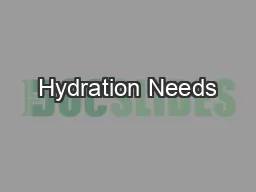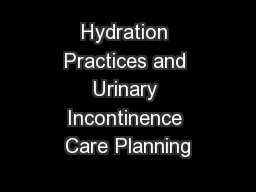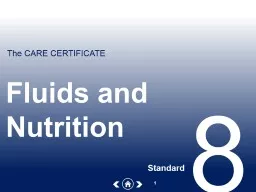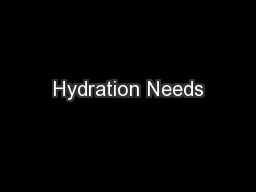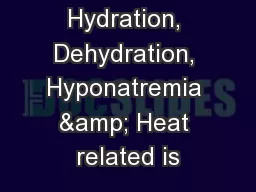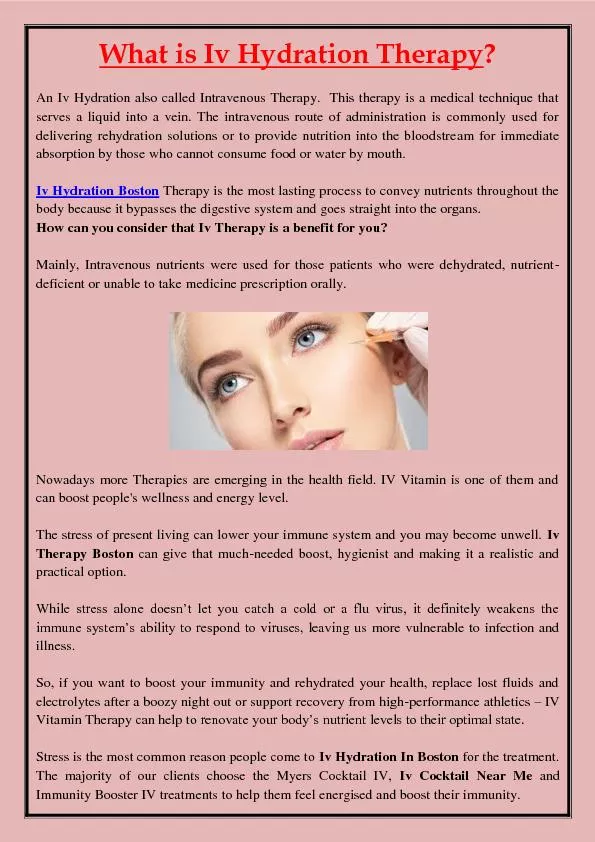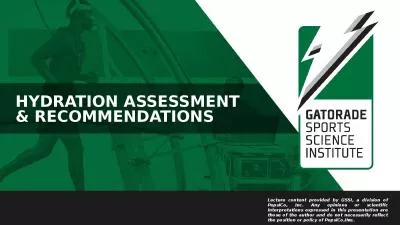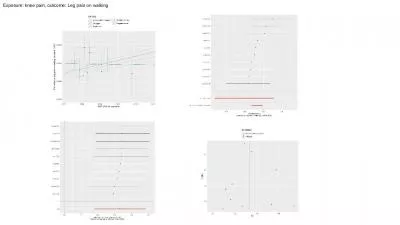PPT-Hydration & Heat Exposure
Author : gabriella | Published Date : 2023-06-10
The Scary Truth US Heat Deaths in 2022 already higher than 30 Year Average OSHA investigates 1520 Heat Related Deaths per year and 1000 Heat Related Injuries Action
Presentation Embed Code
Download Presentation
Download Presentation The PPT/PDF document "Hydration & Heat Exposure" is the property of its rightful owner. Permission is granted to download and print the materials on this website for personal, non-commercial use only, and to display it on your personal computer provided you do not modify the materials and that you retain all copyright notices contained in the materials. By downloading content from our website, you accept the terms of this agreement.
Hydration & Heat Exposure: Transcript
Download Rules Of Document
"Hydration & Heat Exposure"The content belongs to its owner. You may download and print it for personal use, without modification, and keep all copyright notices. By downloading, you agree to these terms.
Related Documents




